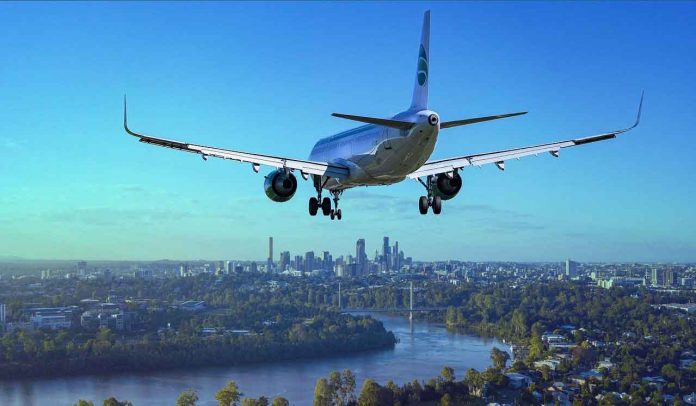Throughout its history, aircraft designers and engineers have turned to cutting-edge materials in order to guarantee safe, effective, and reliable flight performance. In today’s aviation industry, one of utmost importance is selecting and grasping aerospace metals. This article will provide an overview of these materials used in airplanes, their characteristics, as well as their inherent value to aircraft production.
Properties of Aviation Metals
Aviation metals provide a unique set of qualities that make them invaluable for the aerospace industry. Notably, their strength allows them to hold up to stresses imposed while in flight, as well as being light in weight so aircraft designers can reduce weight without compromising structural integrity. In addition, these metals possess excellent corrosion resistance which allows vital components to last despite harsh conditions encountered in the air. Ultimately, these properties ensure safety and efficiency when constructing and flying aircrafts, making them an indispensable part of this sector’s success.
Aluminum Alloys: The Workhorses of Aviation
For many years, aircrafts have largely relied on the distinctive properties of aluminum alloys in their construction. Not only are these alloys lightweight and resist corrosion, but they also boast brilliant strength-to-weight ratios. As a result, they often act as the main components for airframes, wings and fuselages. Furthermore, aluminum alloys can be easily molded to exact specifications through precise manufacturing processes. Lastly, their affordability and availability make them a preferred option within the aerospace industry.
Titanium Alloys: Strength and Durability
Titanium alloys come with rare capabilities that make them suitable for aerospace components. These include their remarkable strength, the ability to withstand extreme temperatures, and corrosion resistance. The dependability and durability of titanium materials have led to their widespread use in the aerospace sector for components such as landing gear, engine parts, and fasteners. Even though they may be more expensive than aluminum counterparts, the high-functioning nature of titanium makes it a financially viable choice for many applications.
Steel Alloys: Strength and Toughness
When demanding performance and durability are critical, various types of stainless steels are often the material of choice. This is especially evident in aircraft engines, exhaust systems and turbine blades where exposure to intense heat and potential corrosion necessitate such alloys. Thanks to its ability to tolerate extreme temperatures and pressure, stainless steels play a pivotal role in aviation engineering.
Composite Materials: Lightweight and High-Strength
Innovation in aircraft construction has been driven by the invention of novel materials called composites. These consist of a blended mixture of fibers such as glass or carbon, held together by a matrix substance like epoxy resin. The combination creates an incredibly lightweight material with excellent resilience and durability. Aircraft designers have recognized the significance of these composites, implementing them into plane wings, tail sections, and other interior parts. Their remarkable strength-to-weight ratio maximizes fuel efficiency and minimizes operating expenses.
Superalloys: High-Temperature Performance
Encompassed among the metals are specialized alloys known as superalloys, which boast incredible strength and durability when exposed to high temperatures. Used extensively in gas turbine engines, these alloys endure strenuous conditions – for instance nickel-based superalloys can be found in turbine blades and combustion chambers. The fact that they preserve their mechanical properties even at extreme temperatures is essential for the reliable functioning of aircraft engines.
Future Trends and Innovations
Continually pushing the boundaries of aerospace technology, researchers and engineers are continually exploring new materials and manufacturing processes. Cutting-edge materials such a magnesium alloys, advanced composites, and 3D printing have been developed in order to improve fuel efficiency while minimizing the negative environmental impacts often associated with air travel. By utilizing these novel materials and fabrication techniques, aircraft designers will be able to create complex geometric shapes that could otherwise not be produced using traditional methods. Undoubtedly, advancements to both aerospace metals and their respective technologies will influence the future shape of the aviation industry.
Importance of Aerospace Metals in Aviation
When it comes to aviation, the performance and safety of aircraft can depend on the choice of metal. Specifically, materials used in the production of aircraft must possess a strong strength-to-weight ratio so as to not compromise structural integrity while remaining lightweight for greater fuel efficiency. To that end, certain metals are essential to ensure longevity and reliability and thus make a safer journey possible. Not only does this reduce overall weight, but it also leads to improved fuel efficiency which resultantly lowers operational costs. Corrosion resistance properties further contribute to the overall performance of these metals when applied in an aeronautical setting.
Challenges in Selecting Aerospace Metals
When constructing any part of an aircraft, one of the most important considerations is the use of aerospace materials. Finding the perfect balance between strength and weight can be a difficult task, with designers needing to assess different metals and their respective alloys. It’s essential that adequate durability and performance can be achieved while keeping the overall mass to a minimum. When it comes to aerospace metals, cost is a major factor to consider. For example, something like titanium can be pricey. Moreover, compatibility with other components in the aircraft construction must be taken into account – this means the chosen metal should easily integrate with materials such as adhesives and composites for a secure end result. Furthermore, corrosion resistance, performance under high temperatures and availability of the metal determine the success of its selection process. All aspects considered, selecting an appropriate aerospace metal requires careful evaluation in order to satisfy the stringent needs of the aviation industry.
Conclusion
When it comes to aviation, the materials used require serious consideration. Indeed, selecting the right aerospace metals is essential for aircraft design and engineering teams to ensure safety, optimum performance, and cost-effectiveness in operations. Aluminum alloys, titanium alloys, steel alloys, composite materials and superalloys each have their own distinct roles when constructing planes – they come with a range of advantages and applications. With technological advancements continuing to be made at an accelerating pace, new materials are now available that can increase sustainability of aircrafts while furthering exploration in the frontiers of aviation.







